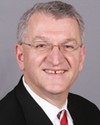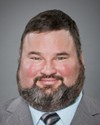Certainly we know this is an area of critical interest in terms of the health sector, and we do look at a number of these questions. We do not have perfect information about all the questions, as we would like, but we do have a number of points I can respond to in terms of the points you raised.
We know the ratio of positions to population was increasing until about the early nineties, and then it fell a bit and has remained fairly stagnant. We do know that we have about the same number of physicians per population as we did ten years ago, but at the same time we know that medicine has changed: it's increasingly specialized, and we use physicians in a different way. We've seen the increased volumes of activity, so we can understand why, when you look at those ratios, you can feel the pressures we feel as a health system in terms of the numbers.
We also know that internationally Canada has fewer physicians in relation to its population than a number of the other similar countries in the OECD, for example.
We do have the breakdown in terms of those who are immigrating and registering as physicians in Canada, those who have come back to the country, and those who leave. For the last couple of years that we have been measuring this, the number of physicians who are returning to Canada from abroad is in excess of those Canadian physicians who are leaving Canada, so there is a good-news story there.
My understanding, in terms of the numbers of foreign physicians as a proportion of the foreign-trained physicians and as a proportion of the total number of physicians in the population, is that it is relatively stable; it's around the 18% mark, and that at the moment is relatively stable.
With regard to your question about retirement, we do know the physician workforce is aging, and we're tracking an increasing average age of physicians. While we don't know precisely when they will retire, we do know this is certainly an issue that planners need to take into account, as well as the increasing feminization of the workforce because the younger physicians do not work in the same way as the older physicians did.
These are all things we're documenting and trying to provide to health care planners for their benefit and for their purposes.




